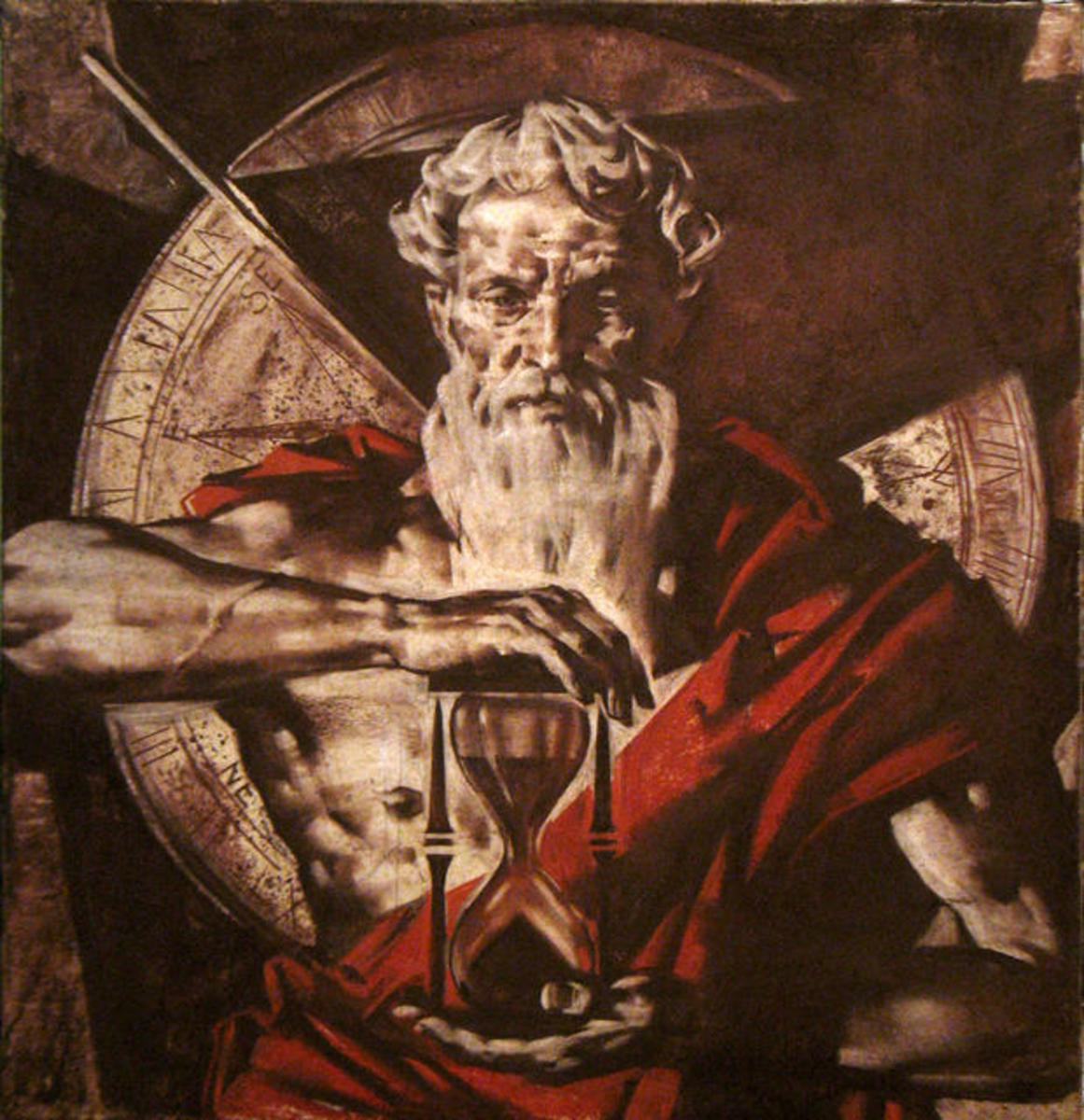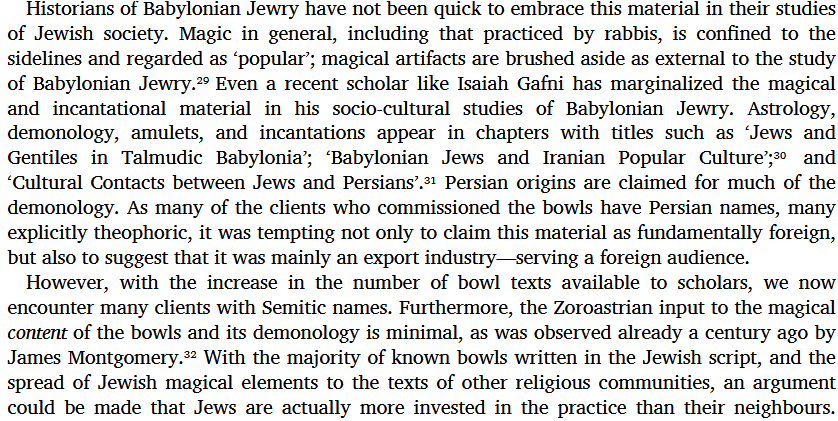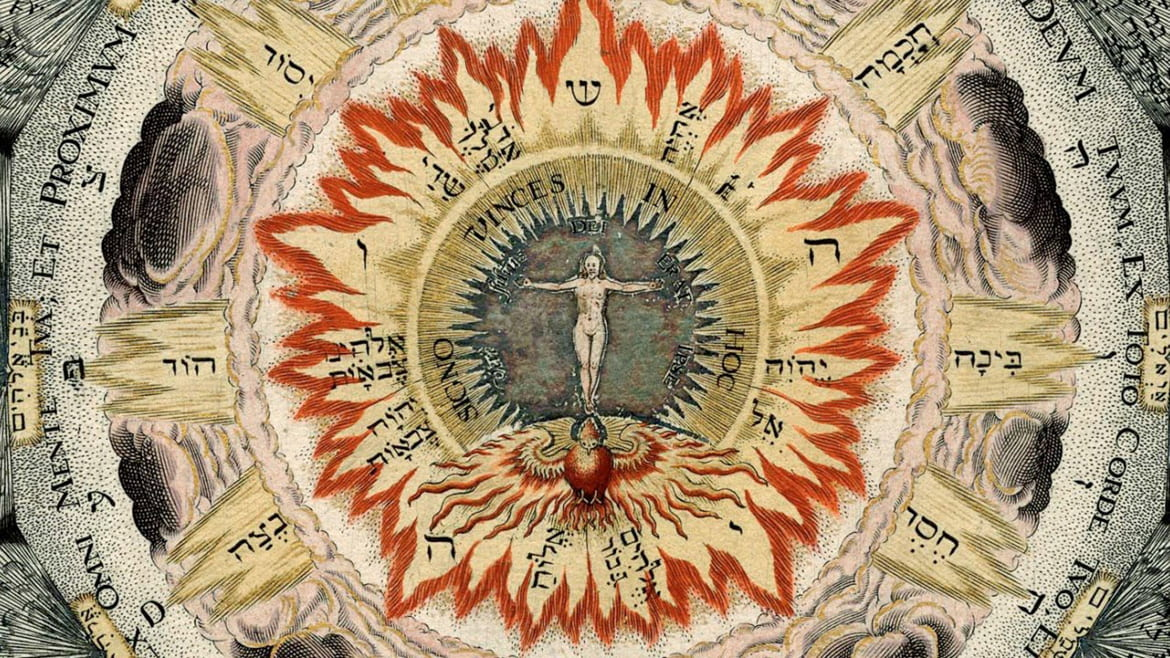
A Few Words
Irrespective of belief, through observation and investigation, we can document how the cataclysmic nature of the End Times is being actively prepared for and (potentially) proactively realised. From this perspective, the construction of Israel and the subsequent projection of hatred and vitriol towards the gates of Jerusalem could be considered as a prelude to the Messianic era.


Certainly, there is a subversive element within Judaism that energises its agenda (and the realisation of prophecy) through the tactical persecution of the Jews. This has been acknowledged by virtuous Jewish scholars, including the ("angel of Auschwitz") Rabbi Moshe Shonfield in his paper, “Documents and testimony on Jewish war criminals.”
The Zionist approach that Jewish blood is the anointing oil needed for the wheels of the Jewish state is not a thing of the past, it remains operable to this very day. Source
That said, I wish to highlight that this chapter is not a thinly veiled anti-semitic rant, and I distance myself from that perspective in the strongest possible terms. If you’re intent on attacking and conflating the actions of the Israeli government with the Jewish people, please understand you are a calculated, nurtured, and required part of the problem. My observations should be considered as an investigation into the principles of a subversive doctrine that follows a path of strategic usurpation. A process of permeation, infiltration, and wholesale assimilation that traverses theological, cultural boundaries, and perceptual limitations.

The Exile
In terms of infiltration, it is worth pausing to highlight that the worship of Baal and Set was introduced into the ancient Egyptian pantheon by the Hyksos. The word Hyksos meaning "the rulers of foreign lands" who had assimilated themselves into the Egyptian ruling elite. Of course, the sacrifices offered to Baal & the fires of Moloch would also come to be associated with the Israelites. Further subversive influences are said to have become more ingrained in the years following the exile of the Hebrew scholars into the Chaldean Neo-Babylonian Empire. That said, there is also a body of evidence to suggest that there were Hebrew sects that were independently well versed in the practice of magic, demonology, and sorcery. Certainly, the cultural influence of Jewish mysticism continues to be incredibly pervasive.

Within the Quran, it is stated that the apostate Jews of Babylon sold their souls for the magic of the Devil's.

That said, magic and demonism were most certainly practiced in ancient Babylon and are oft traced back to a dissident cult within the priesthood of the Magi. Black magicians, a deviant sect that sought to obscure itself within the religious body of Zoroastrianism. As referenced in the Avestan hymns of the Zoroastrian Gatha's, the corrupted Magi practiced invocations to Ahriman (the finite time imprisoned Zoroastrian devil who has associations with mathematics, numerology, and the serpent) and the daēvas, who were the fallen gods of chaos and disorder.
The daēvas have deceived mankind and themselves. Zoroastrian Gatha 32.5
Page 122: The Dawn & Twilight of Zoroastrianism by Robert Charles Zaehner
“The perverted, devilish, unrighteous rite of the "mystery of the sorcerers" consists in praising Ahriman, the destroyer.” Source
As Lucifer led man to the tree of knowledge, Prometheus stole fire from the gods to liberate humanity.
In his book The Dawn & Twilight of Zoroastrianism, scholar and sacred text translator, Robert Charles Zaehner, further notes the worship of the Persian Mithra - the judge, who was perceived as an "intermediary between the God on high and the demon below". Here we can also find correlations between the Egyptian god Thoth - the patron of thieves and the balancer of opposites. Likewise, Egyptian glossaries equate Mithra with Prometheus, who again is associated with Lucifer and the two faces of the dying/rejuvenating God of the mystery religion. Mithra simultaneously embodying the archetype of both liberator and judge.
Page 102: The Dawn & Twilight of Zoroastrianism by Robert Charles Zaehner
https://www.youtube.com/watch?v=O5Vm62a2G34
The secret rites of the Magi included the consumption of a (hallucinogenic?) drink that was derived from the sacred plant haoma - a cognate of the Vedic soma. As documented in the Zoroastrian Avesta and Vedic Rigveda, haoma and soma were associated with the tree of knowledge, the Persians stating that the haoma was the first tree. Of course, with an eye on the deeper layers of context, the word soma would latterly become synonymous with Huxley's Brave New World.
Page 124: The Dawn & Twilight of Zoroastrianism by Robert Charles Zaehner
A fatalistic branch of Zoroastrianism was Zurvanism. Much like his Tibetan counterpart Kalachakra - Zurvan was the androgynous (neutral) god of time, the ruler of the eternal, historical, and cyclical - destruction and regeneration. From the sun to the moon and all the stars of the night sky, his body was said to contain the entire universe - the hierarchies of light, the colours of the rainbow, and the apocalyptic fires of the end time, all emanating from within. Interestingly, the ability to harness the conception (and application) of time (and its esoteric principles) as a means of controlling the course of human history - is an important component within the hierarchies of Judaic mystical theurgy.

Codifying The Lore
We can consider how the syncretism of occultic principles, esoteric theology, monistic mysticism, social governance, and technocracy is being utilised as a means of galvanising the ever-evolving implementation of a feudalistic one world system. A doctrine whose overt manifestation awaits the intended synthesis of the end time. Indeed, as morality becomes increasingly subjective, we can consider the manifestation of a dialectical process that incrementally nudges the populace toward a state of discombobulation, unable to distinguish between right and wrong, truth and deception, reality and delusion.
The Tannaim (meaning repeat) and the latter Amoraim (meaning interpret) scribes gradually merged with/became the biblical Pharisee. The latter of which codified elements of the oral law/Torah (Mishnah = oral law, and the Gemara = sea of learning) into the Babylonian Talmud - which is considered to be a written compendium of the Oral Torah. The esoteric principles that reside at the core of the spoken law (elements of which were also later immortalised as the Kabbalah) are referred to in the Talmud as the sitrei torah and razei torah - the "secrets of the Torah" - secrets that were taught to be handed to Moses on Mount Sinai.

As they have no scriptural basis, the Sadducees refused to accept the oral law of the Pharisee and were thus embroiled in constant conflict with one another. Amongst the people, the Sadducees were perceived as elite and corrupt, and thus unpopular, whilst the Pharisees were broadly welcomed on the perception that they divulged more power to the common man. That said, it would be remiss not to point out that as the oral Torah was passed down through the governing hierarchies of the priest craft (the Torah being for the common man) it too carries connotations of elitism. A statement exemplified by the fact that many Talmudists regard the study and comprehension of the Talmud as superior to scripture.
With the destruction of the Temple (70 A.D.) the Sadducees disappeared altogether, leaving the regulation of all Jewish affairs in the hands of the Pharisees. Henceforth, Jewish life was regulated by the Pharisees; the whole history of Judaism was reconstructed from the Pharisaic point of view, and a new aspect was given to the Sanhedrin of the past. A new chain of tradition supplanted the older priestly tradition (Abot 1:1). Pharisaism shaped the character of Judaism and the life and thought of the Jew for all the future. Source

"The Jewish religion as it is today traces its descent, without a break, through all the centuries, from the Pharisees. Their leading ideas and methods found expression in a literature of enormous extent, of which a very great deal is still in existence. The Talmud is the largest and most important single piece of literature . . . and the study of it is essential for any real understanding of Pharisaism." Universal Jewish Encyclopedia, 1948, Vol. 8, page. 474.
As stated by Rabbi Lois Finklestein, “Pharisaism (meaning set apart/separatist) became Talmudism, Talmudism became medieval Rabbinism, and medieval Rabbinism became Modern Rabbinism.”
In addition to the written scriptures we have an "Oral Torah", a tradition explaining what the Five Books of Moses mean and how to interpret them and apply the Laws. Orthodox Jews believe God taught the Oral Torah to Moses, and he taught it to others, and others taught it to others down to the present day. This tradition was maintained in oral form only until about the 2d century C.E, when much of the oral law was compiled and written down in a document called the Mishnah.
Over the next few centuries, authoritative commentaries elaborating on the Mishnah and recording the rest of the oral law were written down in Israel and Babylon. These additional commentaries are known as the Tosefta, Mekhileta, Sifra, Sifre, Jerusalem Talmud, and Babylonian Talmud. The last was completed at about 500 C.E. The two largest works are the Jerusalem Talmud and the Babylonian Talmud. The Babylonian is more comprehensive and is what most people are referring to when they discuss the Talmud. Source
The Babylonian Talmud is a 64-volume set of laws, decrees, debates, allegory, mysticism, and social governance structures, that were transcribed by the scribes and Pharisees. In its English format the Talmud is heavily edited. Its formative translation is considered the gold standard and can be found here. In essence, the Talmud/Mishrash is akin to a ritually applied religion of law - a multi-layered bureaucracy that (seemingly) supplants the word of scripture. Certainly, a theology entangled with a legalistic framework becomes a meritocracy - one where the adherents to the ritual, procedures, and instructions of the priestcraft can elevate themselves to positions of influence and morality. This is a very similar structure to a mystical practice where the adept climbs degrees of knowledge to attain divinity.

Priest, lawyer, and banker, are historically synonymous with one another.
Elements of Talmudic law intersect with the dialectic principles at the heart of the Kabbalistic union of opposites. If we apply these principles within a modern legal context, we can consider that if you have the lawyers and means to do so, through hair-splitting technicality and legal alchemy, the adept can construct an argument where even the most contradictory statements can be construed in such a manner that they're both authoritatively right.
The subversive over complication and dilution of discernible laws and moral principles speak to the intellectual usurpation of revelation and intuition. Masters of manipulation, we are observing a process of legitimised corruption and social dissection - blurred boundaries and eroded contradictions systematically enabling black to become white and darkness to be expressed as light. Laws of indistinguishable distinction and neurotic nuances, incrementally evolving to become a noose of red tape that is intended to hang the aspirations of the common man.
The current process of usurping Sovereign rights in favour of the global to local community, a disorientating sleight of hand that speaks to the age of manufactured confusion and liminality. That said, it would be remiss of me not to point out that the origin of the union of oppositions/contradictions is neither Talmudic nor Kabbalistic, it is Hermetic and alchemic. The paradox of a unified point of view, the language of the alchemist.
Harnessing universal principles to energise the narratives of the unprincipled. Through the looking glass of occultic law, the entangled underwiring and shadowy underworlds of lore, speak to the attempted statutory circumvention of natural law.

The Kabbalah
The Kabbalah is considered to be akin to the blood and bones within the body of Babylonian Pharisaism - a codified book of esoteric knowledge that was allegedly handed down through the spoken word of the priest-craft. The adept Kabbalist considered akin to students of a secret science that interprets the hidden meaning of the Jewish scriptures.
The Kabbalah's Ein Sof could be equated with the one mind of Hermeticism, pantheism, alchemical conceptions of the Ether, and their modern equations with quantum mechanics. An eternal state of being (undefinable and inconceivable) that permeates all space and is devoid of substance. A void that is filled with what magicians have referred to as the "universal magic agent" or "Luminiferous" aether. Ein Sof represents the primordial formless state of the universe before God self-materialised from within it - God before the realisation of his divinity. Indeed, whilst the biblical God is monotheistic (a personal one God), the Kabbalah's Ein Sof can be (albeit crudely) equated with elements of pantheistic Monism - an impersonal and primordial all is God.
Luminiferous = Light bearer Lucifer = Latin for the ancient Greek phosphorus Phos = Light Horus = Egyptian sun god, synonymous with the all seeing eye Horus = The one on high/ meaning above Light above/Light Bringer = Lucifer.
The two bodies of Jewish mysticism are the Sefir Yerizah and the relatively modern Zohar, which means light. Under the guise of secret knowledge, the Zohar embodies the subversion of simplicity and direct language. Through interspersing elements of the profound with irrelevance, and with metaphors and allegorical obfuscations masking the failures of its conceptual limitations and irreconcilable contradictions, we can discern that the Zohar is a compilation of different doctrines. An Occultic emperor's new clothes. Its English composition retaining distorted fragments of the bible it attempts to interpret, and the esoteric knowledge it emulates. Hence why scholars such as (historian and philosopher of Jewish mysticism) Moshe Idel declare it to have an origin independent of biblical interpretation.

The Kabbalah's explanation for our fallen state
